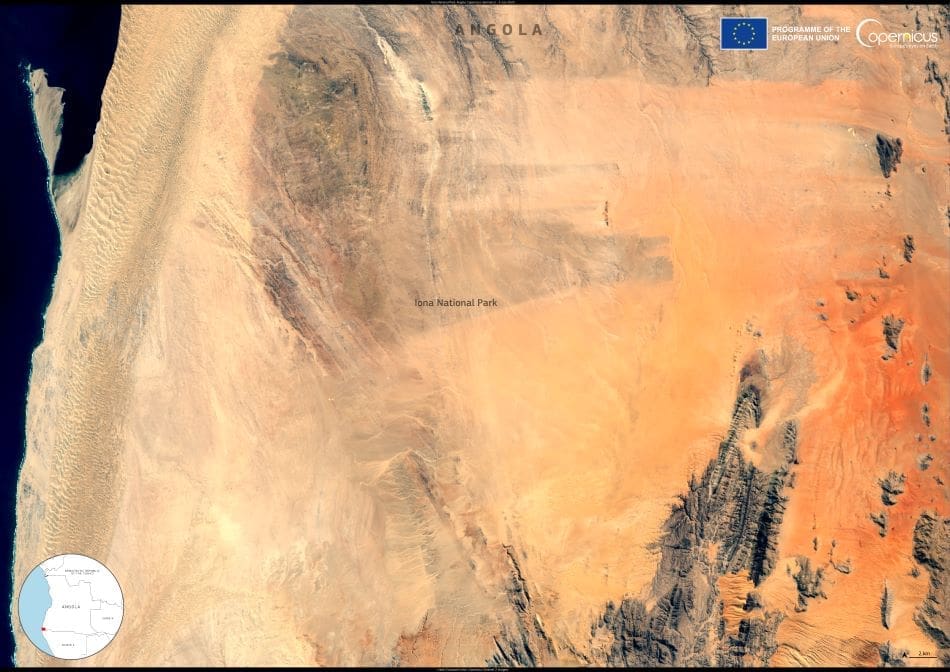Iona National Park in south-west Angola marks the northern reach of the Namib Desert, regarded as the oldest desert on Earth. Covering 15,150 km², the park links with Namibia’s Skeleton Coast National Park and the Namib Partial Reserve to form one of the world’s largest transfrontier conservation areas, spanning nearly 50,000 km².
Declared a national park in 1964, Iona endured more than four decades of conflict, including Angola’s independence and civil wars. During this time, rhino and elephant populations disappeared, infrastructure collapsed, and local communities faced extreme hardship. When the conflict ended in 2002, people began to return, and surviving populations of zebra, oryx, and springbok persisted, along with small numbers of cheetah, leopard, and brown hyaena.

In December 2019, the Angolan government partnered with African Parks to secure Iona’s long-term ecological, social, and economic sustainability. Restoration efforts have included reintroducing Angolan giraffe in 2023 and 2024, marking the species’ return after decades of absence. The first aerial survey since 2019 counted 11 wildlife species, providing valuable data for monitoring recovery. A Land Use Plan developed through consultations with ten community groups is helping integrate sustainable practices, while education and socio-economic initiatives are supporting local Himba communities.
This image, captured by a Copernicus Sentinel-2 satellite on 3 July 2025, shows the park’s rugged mountains and vast desert plains. Sentinel satellites provide essential data for tracking environmental changes and studying geological processes in remote landscapes such as Iona. Despite increasing pressures from people and livestock, continued conservation measures and community involvement are positioning the park as a leading example of coexistence between people and nature.
Featured image credit: European Union, Copernicus Sentinel-2 imagery



